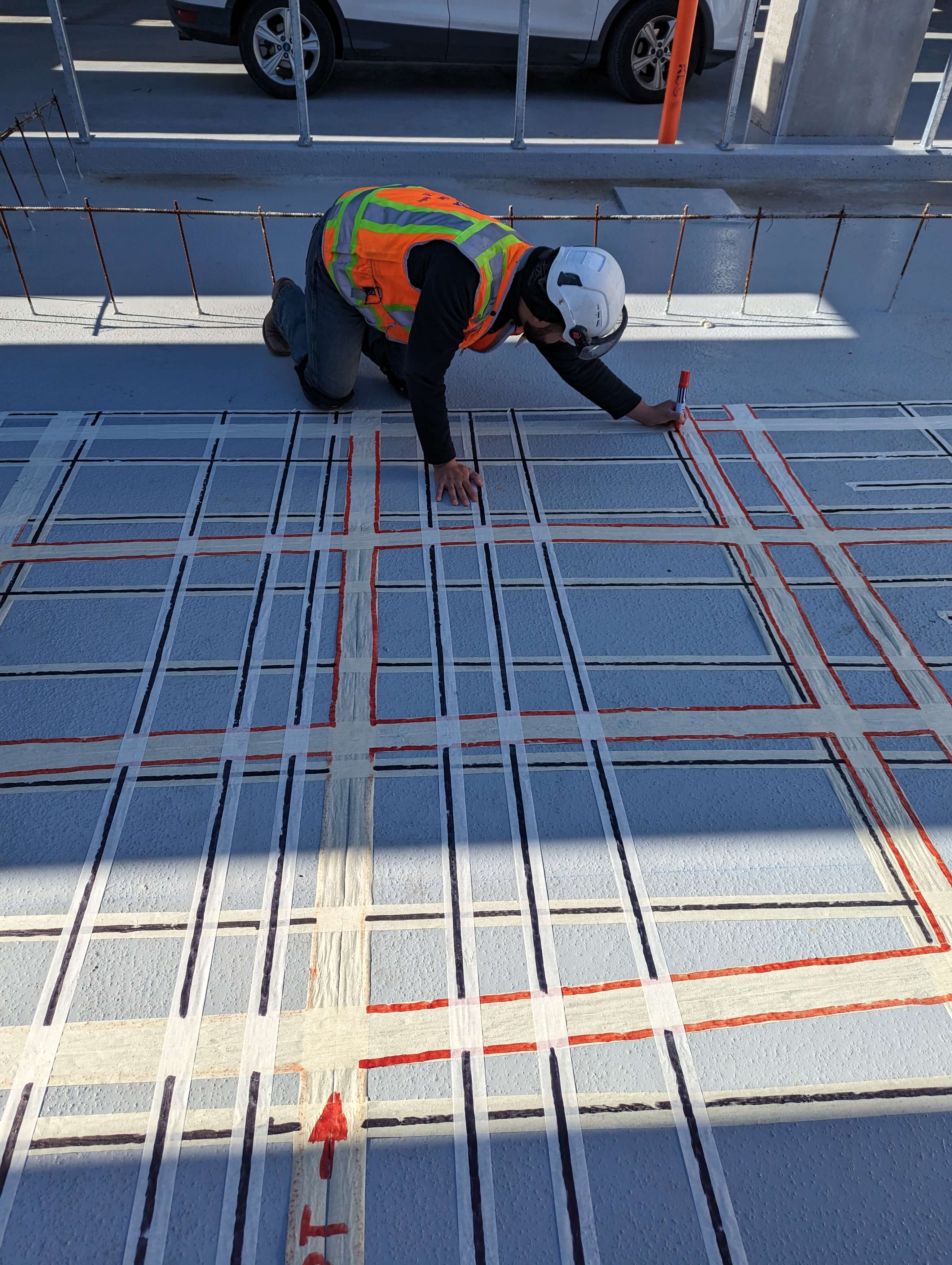Efficient Concrete Scanning Methods for Construction Tasks
Wiki Article
Unveil the Transformative Power of Concrete Scanning in Taking Full Advantage Of Performance and Safety And Security
Concrete scanning has actually arised as an important tool in the building market, providing unrivaled advantages in improving task performance and making certain safety and security criteria. The transformative power of concrete scanning lies in its capability to offer comprehensive understandings and real-time information, revolutionizing just how tasks are intended and carried out.Value of Concrete Scanning
Making sure the architectural stability and safety of building and construction jobs begins with the important action of performing complete concrete scanning. Concrete scanning is a non-destructive method used to detect and map subsurface elements within concrete structures. This process is necessary in identifying prospective hazards, such as rebar, post-tension cords, and channels, that may be hidden within the concrete. By using sophisticated innovations like ground-penetrating radar (GPR) and electromagnetic induction, construction teams can accurately situate these aspects without triggering any type of damage to the framework.Additionally, concrete scanning assists in maximizing job timelines and budget plan by preventing unforeseen prices and delays that may emerge due to unpredicted obstructions within the concrete. Inevitably, investing in complete concrete scanning is a positive technique that improves both efficiency and safety in construction projects.
How Concrete Scanning Works
Concrete scanning runs as an essential tool in building and construction tasks by using advanced innovations to spot and map subsurface elements without causing structural damage. Ground Penetrating Radar (GPR) and Electromagnetic Induction (EMI) are two main techniques used in concrete scanning. GPR works by giving off high-frequency radar pulses right into the surface area, which recuperate when they encounter subsurface objects or voids. The moment taken for the signal to return indicates the deepness and area of the things. EMI, on the various other hand, uses magnetic fields to determine variances in product structures, such as identifying rebar or channels within concrete frameworks.During the scanning procedure, the information collected is examined in real-time, permitting instant recognition of potential threats or challenges below the surface. This info aids in decision-making, ensuring that building and construction tasks proceed safely and successfully. Additionally, 3D imaging software application can be utilized to develop detailed maps of the subsurface aspects, even more enhancing task preparation and execution. By employing these innovative innovations, concrete scanning dramatically minimizes the threat of costly damages and injuries on building and construction websites.
Advantages of Concrete Scanning
One of the primary benefits of concrete scanning is the capacity to discover and situate ingrained items such as rebar, post-tension cables, and conduits properly. Concrete scanning aids in preparation and developing a lot more successfully, as it provides precise details about the Read Full Report location and depth of architectural components.
Instance Studies: Concrete Scanning Success

In one more instance, a construction firm used 3D concrete scanning to assess the condition old concrete structures in a find out here historical building. The comprehensive scans provided beneficial insights right into the degree of damage and helped prioritize maintenance efforts effectively. By proactively addressing locations of concern identified through scanning, the firm had the ability to expand the lifespan of the structure and make sure occupant safety.
These study highlight the transformative power of concrete scanning in boosting performance, precision, and safety and security in building and construction jobs.
Applying Concrete Scanning in Projects
Implementing advanced scanning modern technologies during building projects has ended up being increasingly crucial for improving precision and safety. By incorporating concrete scanning right into job preparation and execution, construction groups can determine potential dangers, such as rebar or post-tension cords, hidden within concrete frameworks. This aggressive method decreases the threat of crashes, hold-ups, and costly rework, inevitably resulting in extra efficient job timelines and spending plans.To carry out concrete scanning successfully, task supervisors need to team up very closely with experienced scanning professionals to determine the most suitable scanning strategies for the details project needs. Engaging scanning specialists from the early phases of a task allows the team to develop thorough scanning strategies that address crucial areas of worry and ensure complete data collection.
Additionally, incorporating concrete scanning into routine task workflows can improve decision-making processes, as real-time scan data provides prompt insights into the condition of concrete frameworks - Concrete Scanning. This data-driven strategy assists in educated analytical and allows teams to make changes promptly, cultivating a society of effectiveness and security throughout the project lifecycle
browse this site

Conclusion
To conclude, concrete scanning plays a crucial function in boosting efficiency and safety in building projects. By utilizing advanced technology to map and discover out underlying frameworks within concrete, this procedure aids to avoid pricey mistakes, make sure architectural honesty, and reduce risks on website. With the capability to discover hidden components and supply precise information, concrete scanning proves to be a valuable device for maximizing job results and making the most of overall success.Concrete scanning is a non-destructive approach utilized to find and map subsurface components within concrete structures. Additionally, concrete scanning assists in optimizing project timelines and budget by avoiding unanticipated prices and delays that might develop due to unpredicted blockages within the concrete. One notable case research involves a massive restoration job where concrete scanning played an important function in making certain job success.In one more case, a building company made use of 3D concrete scanning to analyze the condition of aging concrete structures in a historic building. By incorporating concrete scanning into job planning and implementation, construction groups can recognize possible dangers, such as rebar or post-tension cables, hidden within concrete structures.
Report this wiki page